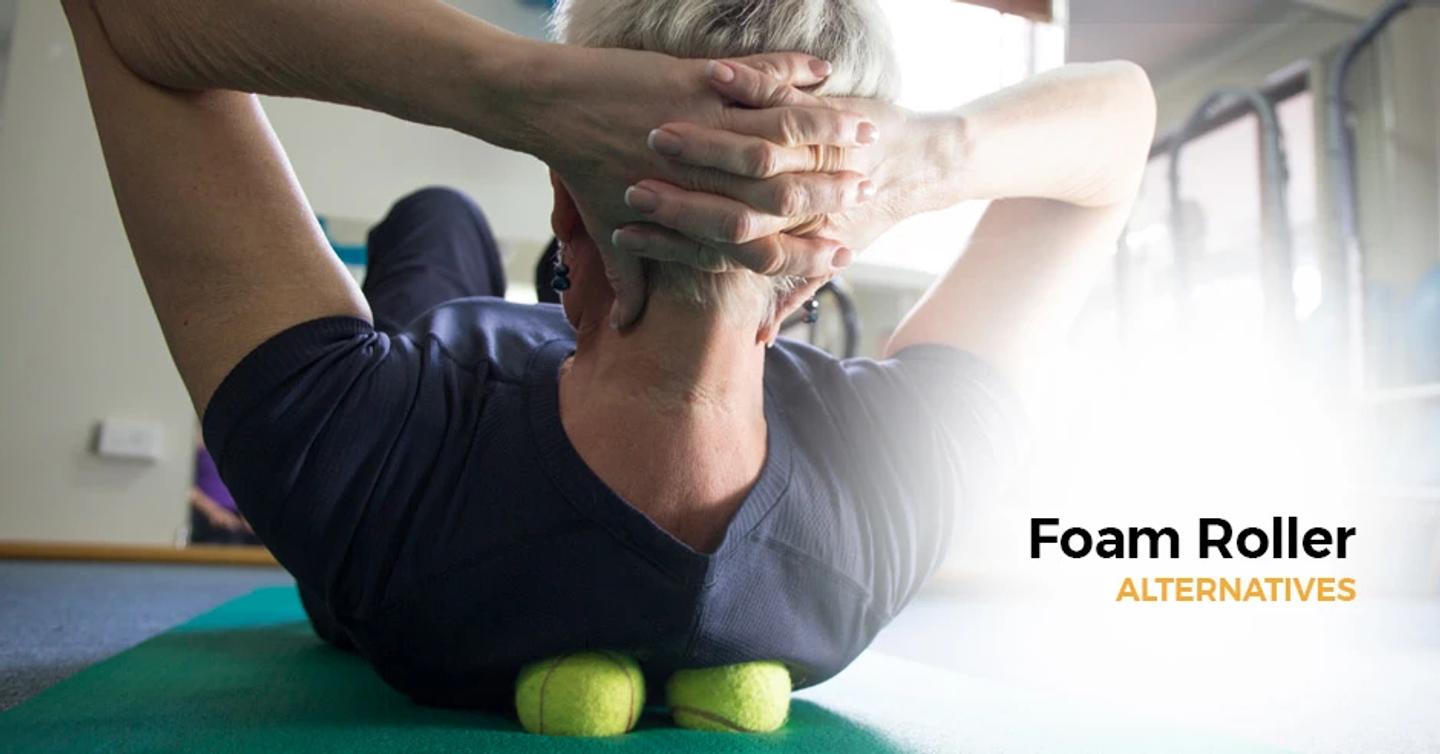
No Foam Roller? No Problem! Try These Alternatives!
Reading Time: 3 minutes 39 seconds
BY: ISSA
DATE: 2022-04-07
Foam rolling is a self-myofascial release (SMR) technique. It relieves knots, decreases muscle soreness, and promotes recovery. There are many types of foam rollers to choose from. But what if your clients don’t have access to a standard foam roller? In this article, we review different items or equipment that can be used to provide similar benefits of foam rolling.
Benefits of Foam Rolling
The body is made up of connective tissue that undergoes stress during a workout. Exercise breaks down muscle tissue and causes muscle adhesions. This causes most clients to encounter muscle soreness, tightness, and muscle knots. Foam rolling helps break up these muscle knots and relieve pain.
Foam rolling aids in recovery through:
Increased blood flow
Break down of scar tissue
Reduction in muscle soreness and pain
Increased range of motion
Back pain relief
Check out these nine additional foam rolling secrets everyone should know.
Foam Rolling Alternative Equipment
With so many great benefits of rolling, be sure to implement this technique into all client programs. Clients do not need to have a foam roller outside of the gym. Instead, they can use household items or purchase alternative tools that produce the same effect.
Tennis Ball, Baseball, Lacrosse Ball
Clients can use any ball for SMR. Foam rollers are a quick and effective method to target larger muscles, but a tennis ball can do the trick as well. Even if a client does have a foam roller, tennis balls help clients roll smaller areas of a muscle that larger rollers can’t reach. For example, rolling the bottom of the foot with a ball can help loosen plantar fasciitis.
Just like a traditional foam roller, your client can adjust the pressure they apply to a muscle using one of these athletic balls. The shape of the ball and angle at which you roll determines the amount of pressure. A tennis ball might be too soft for some clients. In this case, they can switch to a baseball or lacrosse ball.
Show clients how to reach areas they can’t get to with just their hands or a foam roller. You can use the wall or ground to lean on and apply pressure with your body. As you roll, you will encounter trigger points. To release these sore or tight areas remain on them for 15-30 seconds.
Trigger Point Massage Ball
Massage balls come in many forms beyond just athletic balls. Some companies make specific trigger point massage balls that are bigger than a tennis or lacrosse ball. Some of them even have pressure-point spikes. This provides a quicker deep tissue massage for muscle relief.
A tennis ball is great for clients just starting out. Whereas a spiky massage ball will give a more intense pressure.
Massage Stick or Rolling Pin
Manual massage sticks give clients more control over their rolling technique than a ball. Clients might prefer massage sticks versus a ball roll to target different areas of a muscle.
For an easy and inexpensive option, you can even recommend using a kitchen rolling pin. This could replace having to purchase a massage stick. Wrap dish towels around the rolling pin for a less intense roll.
Broomstick
Another manual stick massage object clients can use is a broomstick. This type of manual rolling gives clients control over the pressure they apply. Because the stick is thinner than a rolling pin, they will roll different areas.
Micro tears or more serious injuries can cause scar tissue build-up. This self-myofascial release helps break up muscle adhesions in the body. Clients can use a broomstick to roll the quadriceps, hamstrings, and calf muscles.
Have clients who experience knee pain roll their quads. This will release muscle tension and relieve pain. Then you can prescribe knee-strengthening exercises.
Barbell
If your clients need a heavier object than a broomstick, they can use a barbell. If there are no foam rollers available, most gyms have a barbell. The barbell provides more pressure than a broomstick but is still a thin object.
You can place your body on top of the barbell as if it was a foam roller. Or you can rest the barbell on top of the quads and roll them manually. The barbell provides control and pressure.
Hard Plastic Bottle
Aside from manual stick methods clients can use short and thicker items like water bottles. Everyone has some sort of bottle in their house. This can be a reusable can, hard bottle, or plastic water bottle. The harder the bottle, the more intense the pressure.
A hard plastic bottle is as effective as a foam roller for releasing a tight muscle. It provides a deep tissue massage and helps induce lymphatic drainage.
Thera Gun
Lastly, a more advanced tool for SMR is the thera gun. This is an electronic device that uses percussive massage therapy. It relieves muscle soreness and pain through vibration.
Constant bursts of pressure on the muscle increase blood flow and releases knots deep within the muscle. If a client does not have access to a foam roller or just wants something more advanced, they might consider using a thera gun.
The advanced vibration helps with range of motion, stabilization, muscle coordination, and muscle activation before a workout. A great tool for your advanced clientele.
If you are looking to advance your career as a certified personal trainer, consider specializing with ISSA’s Corrective Exercise course. Corrective exercise enables professionals to work with a variety of clients to help prevent and manage muscle-related pain or movement limitations.